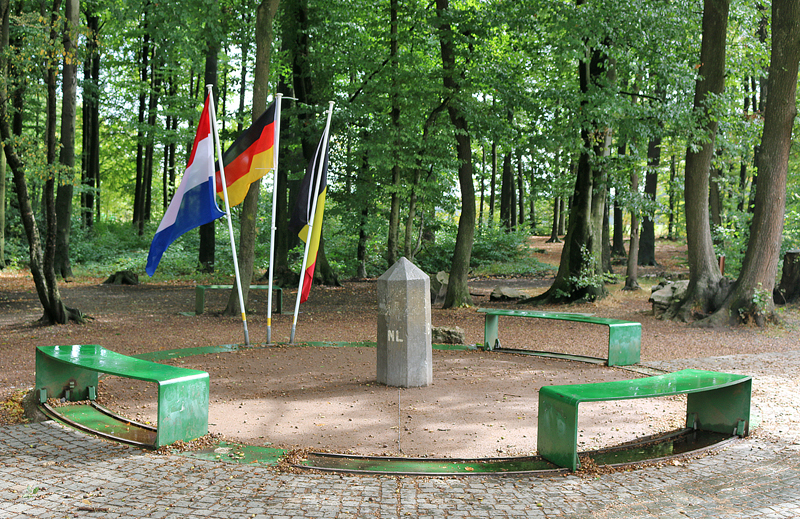While I was matriculated as a student in college, I spent the month of July in Paris studying photography — and while I was there, I stayed overnight at the home of the pen pal of a friend who lived in the town of Seraing, which is southwest of Liège in Belgium.
When I decided to head to Aachen so that I could be in Germany for the first time, I had no idea that the train on which I was a passenger likely passed in a tunnel almost underneath the point where three countries meet — for if I had known, I would have gone out of my way to visit it.
3 Countries at the Same Time: Drielandenpunt
When I was in Amsterdam for a meeting back in September of 2018, I decided to rent a car to take a side trip to Luxembourg — about which I intend to write a trip report — and when I was searching for places to visit on the way back to Amsterdam, I found Drielandenpunt — literally translated from Dutch for three land point — which is where the borders of the Netherlands, Germany and Belgium meet…

…so I decided to visit. This is the driveway which leads to the parking area at the end on the right.

The stone marks the point where the borders of the Netherlands, Germany and Belgium converge.
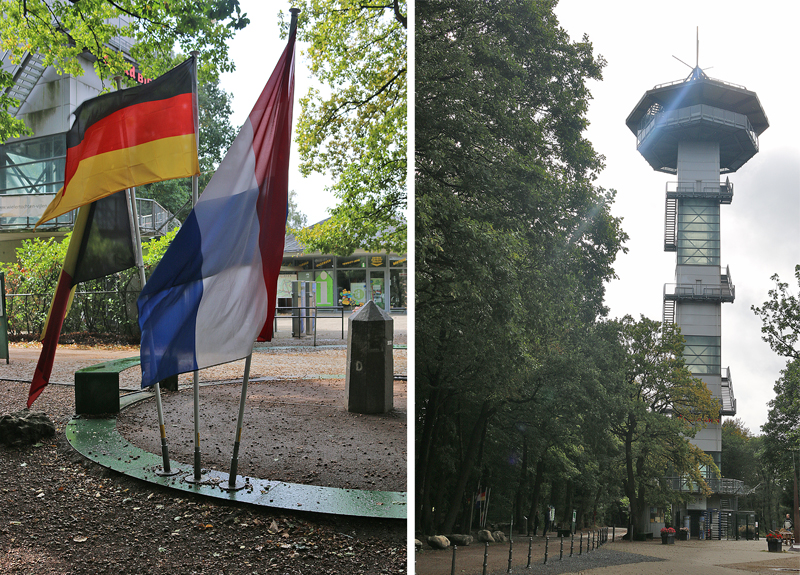
Aside from the panorama observation tower — which opened to the public on Friday, October 7, 2011 and includes a skywalk — shown in the photograph on the right, you can also visit a labyrinth, restaurant, snack bar, terrace, and a small playground for kids. I did not visit any of these places, as I was only interested in being in three countries simultaneously.
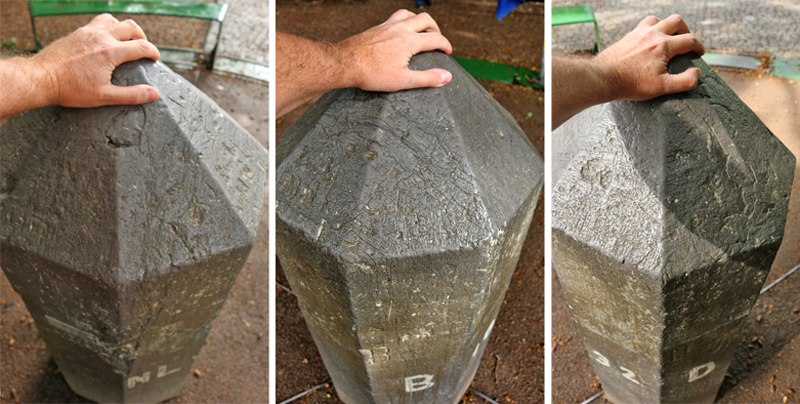
As my hand was in all three countries in all of the photographs shown above, what if the Schengen Area of Europe — which abolished all passport controls and allows crossing the borders of 26 participating countries as freely as crossing the borders of states in the United States — did not exist? Would my blood cells have been required to go through passport control every time they crossed a border from one finger to another?
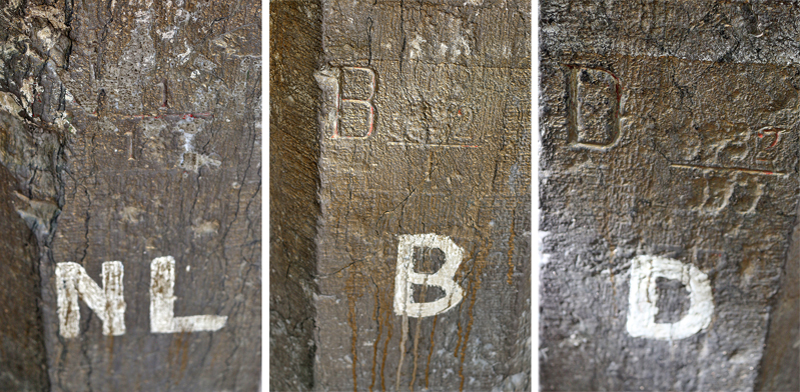
Look carefully and you will see the old carvings of the official letter designations of each country, which have since been painted on the marker in white. By the way, here is a fun fact: the Netherlands, Germany and Belgium were three of the five first member Schengen countries. The other two were Frances and Luxembourg.
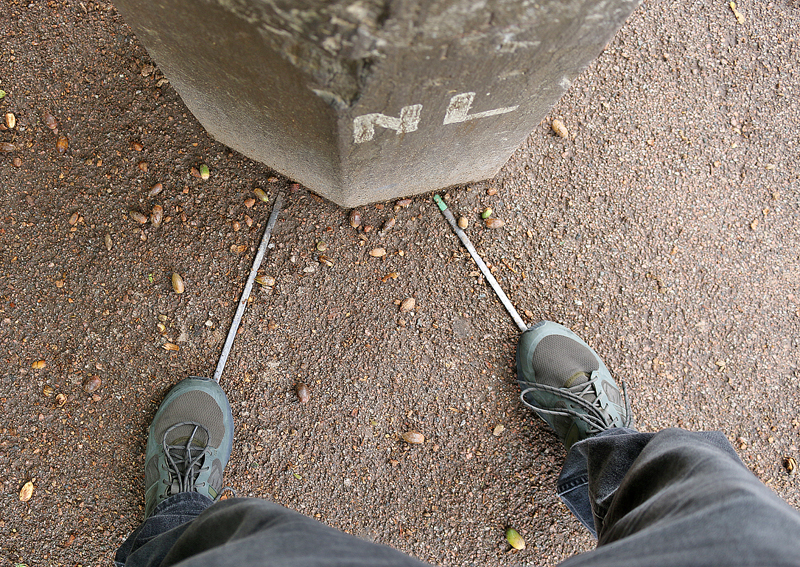
I could not decide if positioning my feet this way was the best way to stand in three countries at the same time…
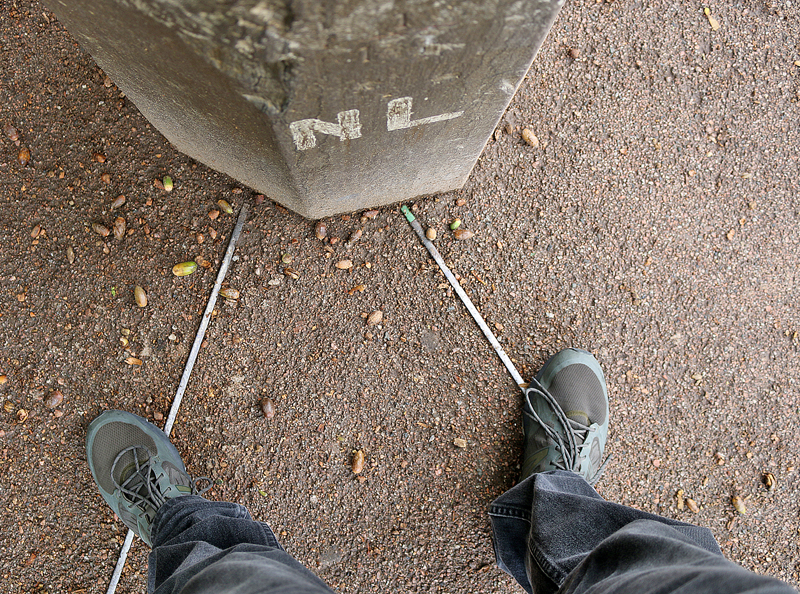
…or should I have positioned my feet this way?
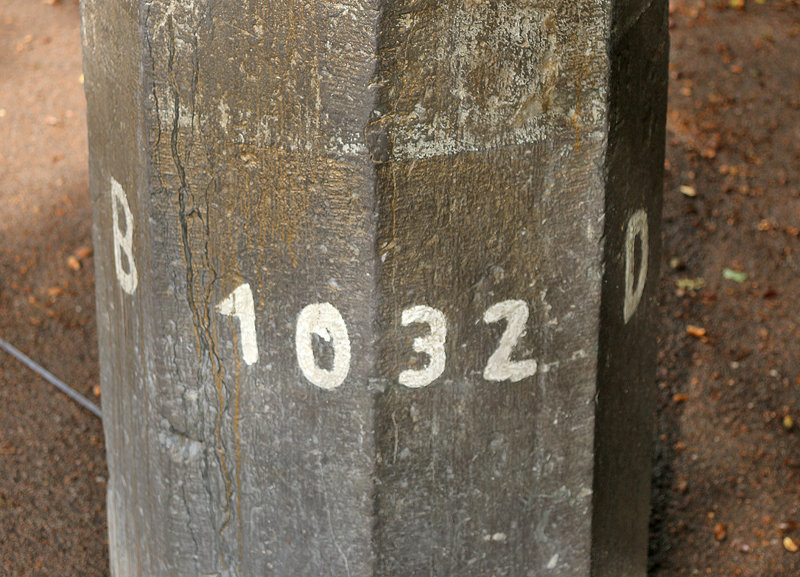
I am not sure at this time what the 1032 means on this marker, which is from 1926…
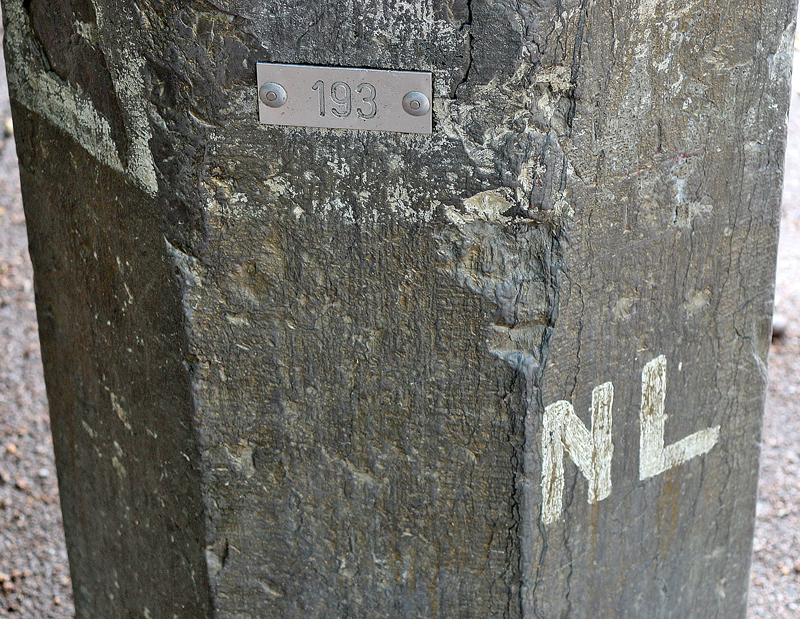
…nor do I know the significance of the number 193 — but if I find out definitive information pertaining to either number, I intend to edit the article to include it here.
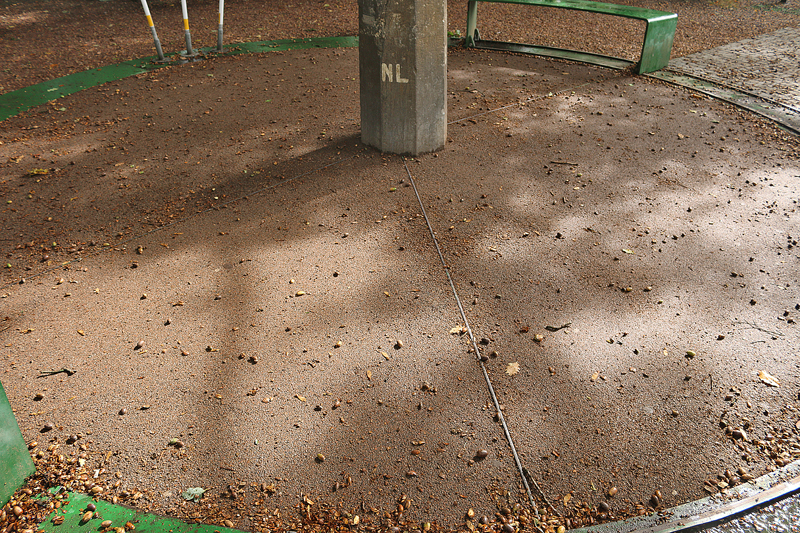
Here is a thought which went through my warped mind: what if someone stood in one country with a weapon shot within the second country and struck a person standing in the third country? What would happen to this person; and which country would handle it?
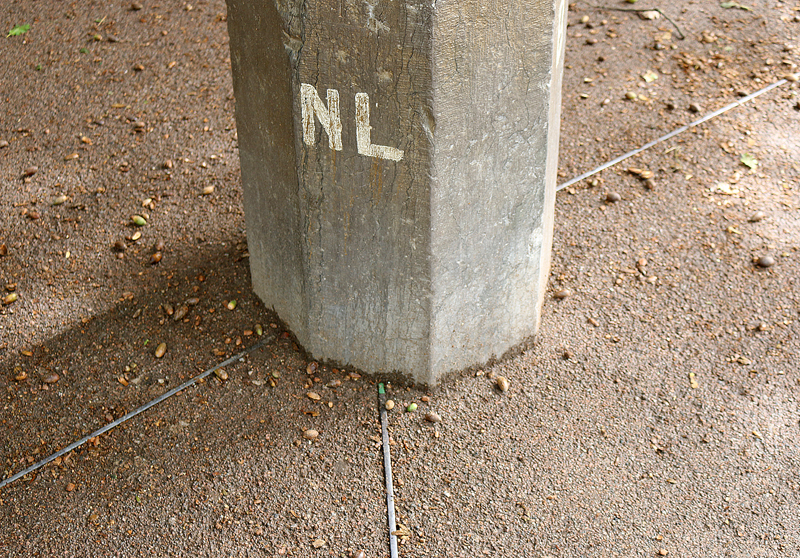
Metal strips delineate the borders of each of the countries. I straddled the border of the Netherlands and Belgium to take this photograph. Germany is the country in the background which takes up a full half of this area.
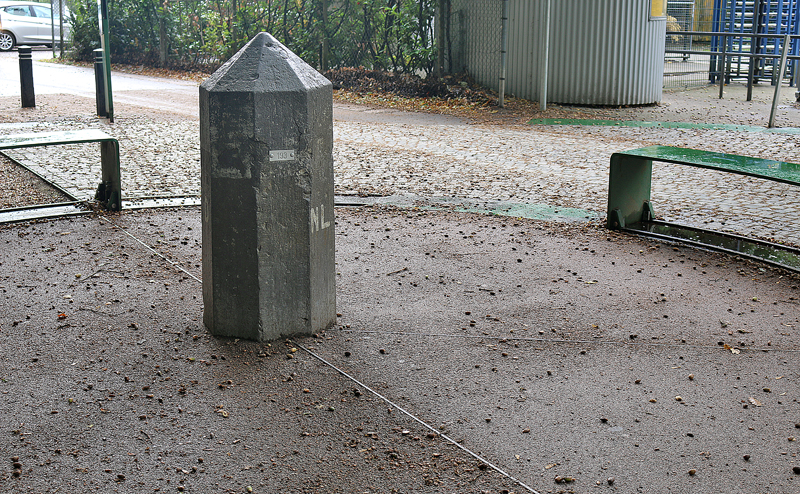
Did you know that that at one time, this spot was a quadripoint? A fourth country named Neutral Moresnet existed from 1816 to 1920 before it became a territory of Belgium after World War I. In fact, the road leading to this spot is called Viergrenzenweg, which roughly translates to Four Borders Way.
The closest to a quadripoint in the world currently is in the confluence of the Cuando — which is also known as Chobe — and Zambezi rivers, where the borders of Namibia, Botswana, Zambia, and Zimbabwe meet; but although it is still disputed, Namibia and Zimbabwe are generally believed to be approximately 100 meters apart, which actually results in the creation of two separate trijunctions in the confluence of those rivers.
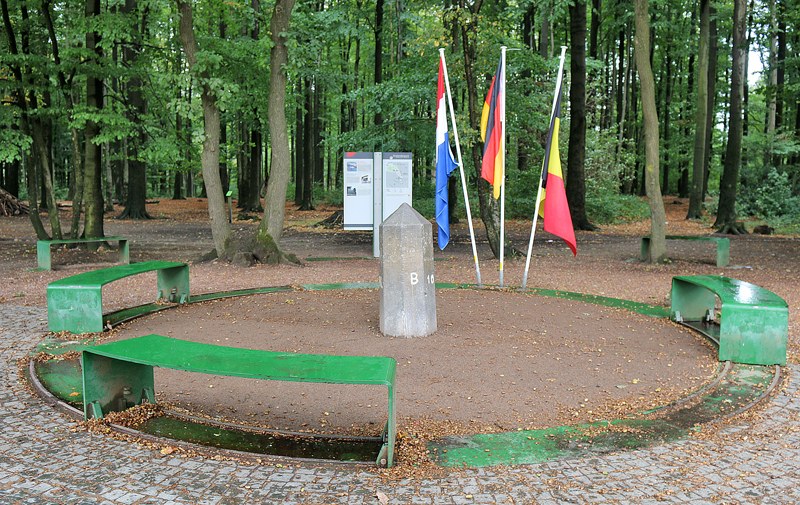
People may not stand on three countries simultaneously every day; but that does not mean visiting one of these points is difficult to do, as currently as few as 157 places around the world are where the borders of three countries meet; and as many as 207 may exist — including the one highlighted in this article — depending on who or what you believe.
“Nearly half of them usually exact but sometimes slightly indefinite places are situated not on dry land but in rivers or lakes or seas”, according to this article from Twisted Sifter, which shows photographs of other notable tripoints around the world — along with photographs of them. “When on dry land, the exact tripoints are usually demarcated by the center or vertex of special (but highly various) markers or pillars. Often and increasingly such places are also the sites of sometimes extensive monumental memorials and expositions.”
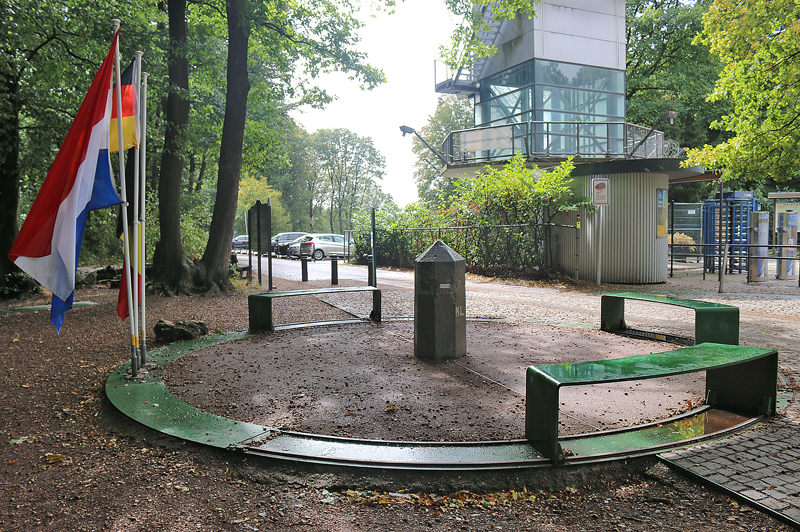
The vehicle in the parking lot in the background which is closest to the site of the tripoint between the three countries is the car which I rented for this trip.
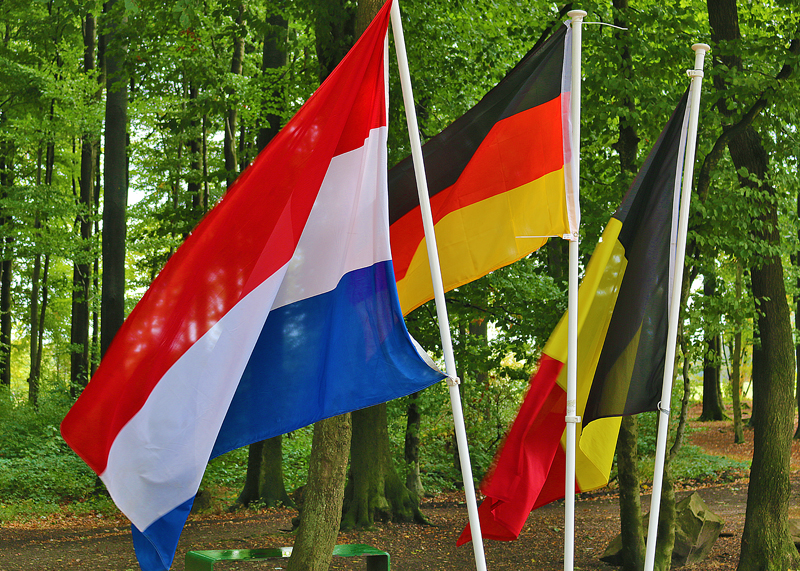
The flags of the countries of the Netherlands, Germany and Belgium — from left to right — proudly wave in the breeze.
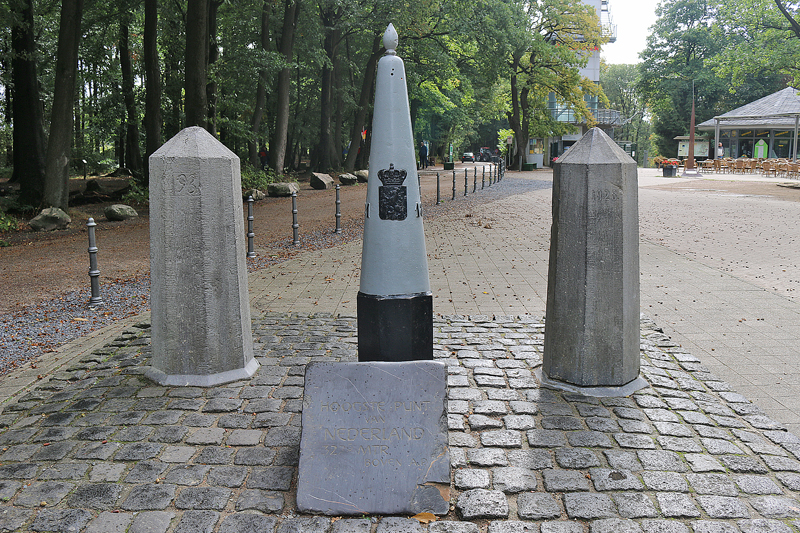
Former border markers of the triple border point are located approximately 50 meters from the current border marker.

This stone marks the highest point in the Netherlands, which is 322.5 meters in altitude.
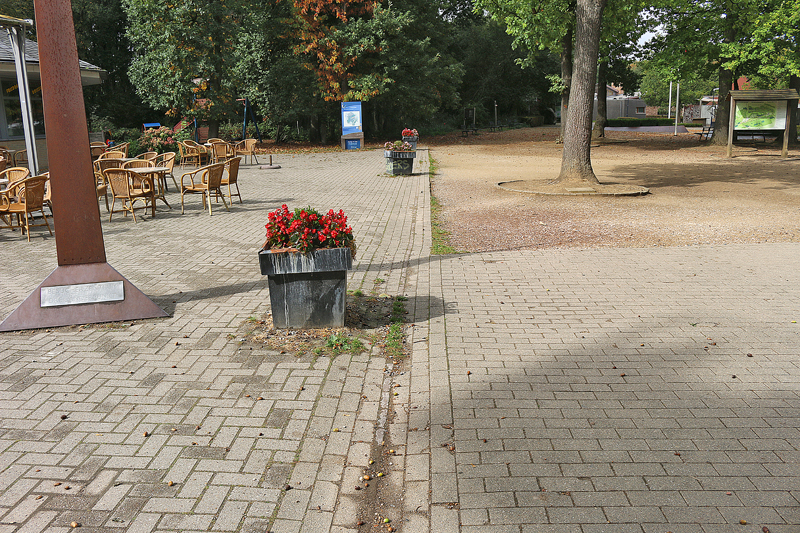
This is the border of Belgium on the left and the Netherlands on the right, as I straddled the border between both countries when I took this photograph.
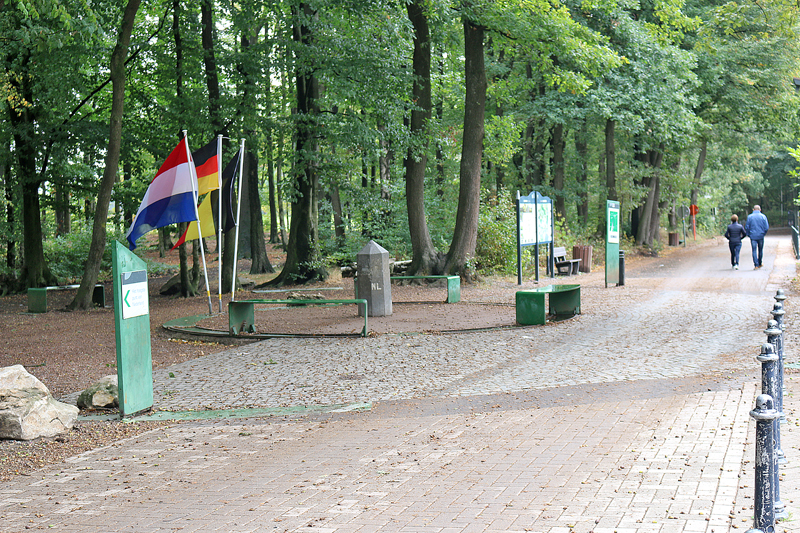
Summary
Aachen in Germany is the closest city to Vaalserberg hill, which is located in the province of Limburg at the south-easternmost edge of the Netherlands near the town of Vaals. The road to this location is accessed from within the Netherlands and fairly easy to get to if you are driving a vehicle — although you can also arrive using public transportation via a combination of train and bus.
The panorama observation tower — which is also known as the Wilhelmina tower, which is named after a queen of the Netherlands — is open every day from 10:00 in the morning through 8:00 in the evening. You can purchase an entrance token in either the Restaurant de WilhelminaToren or Restaurant De Bokkerijder for three euros.
The Taverne de Grenssteen restaurant is open every day of the year — with the exception of Christmas Day and Carnival Monday — from breakfast hours until 5:00 in the afternoon or 6:00 in the evening.
The labyrinth and souvenir shop are open every day from 10:00 in the morning through 6:00 in the evening between April 1 and November 1, the labyrinth and souvenir shop are open every day from 10:00h till 18:00h. The ticket office closes at 5:00 in the afternoon. Between November 1 and April 1, the labyrinth opens during good weather on weekends and holidays. Admission prices for the labyrinth are five euros per person between 12 and 64 years of age; free for children younger than four years of age; and four euros per person for everyone else. You can purchase your tickets at a discount via the official Internet web site of the labyrinth.
Labyrint Drielandenpunt B.V.
Viergrenzenweg 97
6291 BM Vaals
+31 (0)43-3065200
info@drielandenpunt.nl
The playground for children is free of charge.
No admission is charged to visit the actual concrete marker, as you do not need to pay a single cent; and it remains open 24 hours per day, seven days per week. When I visited, I did not pay for parking, either.
All photographs ©2018 by Brian Cohen.
